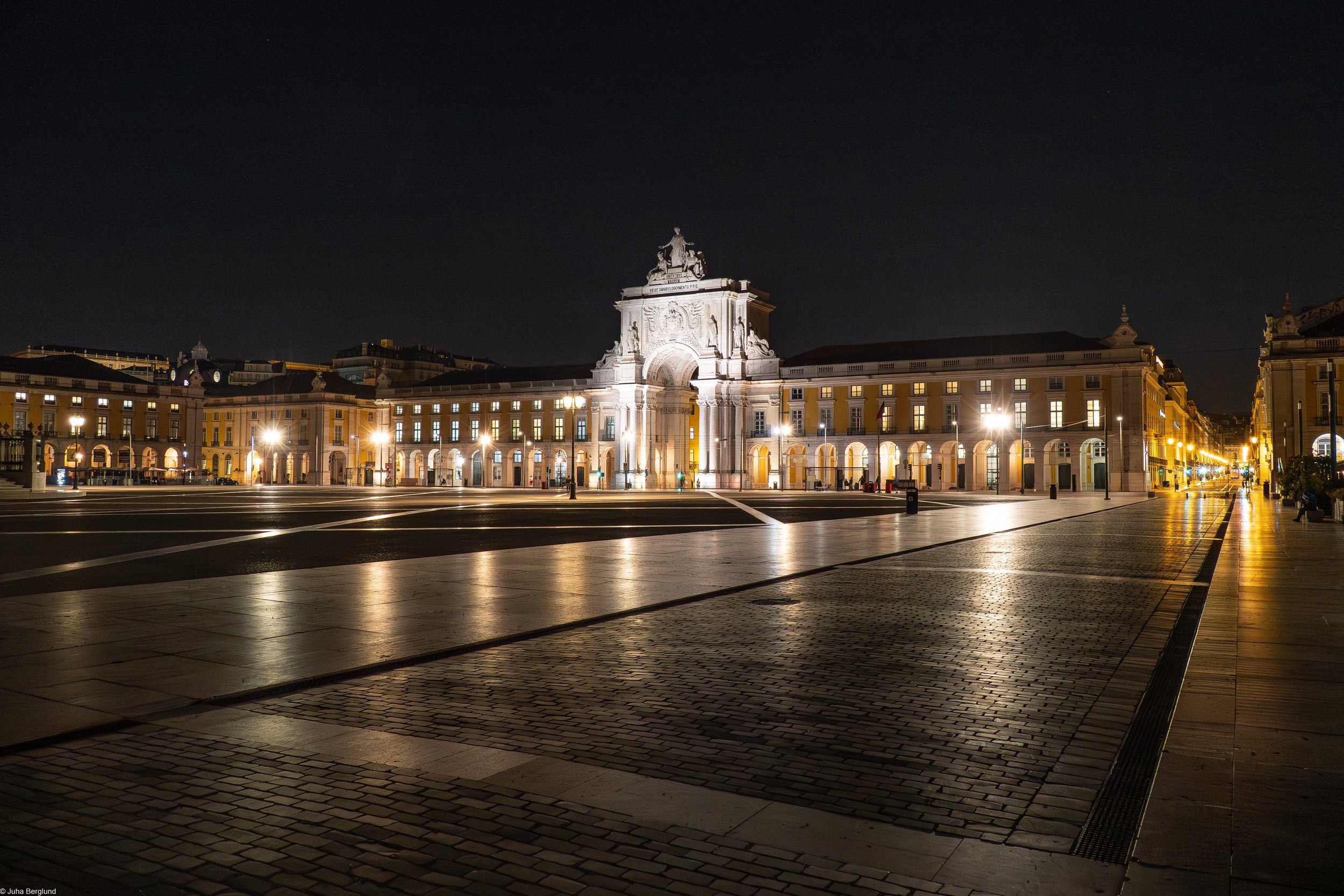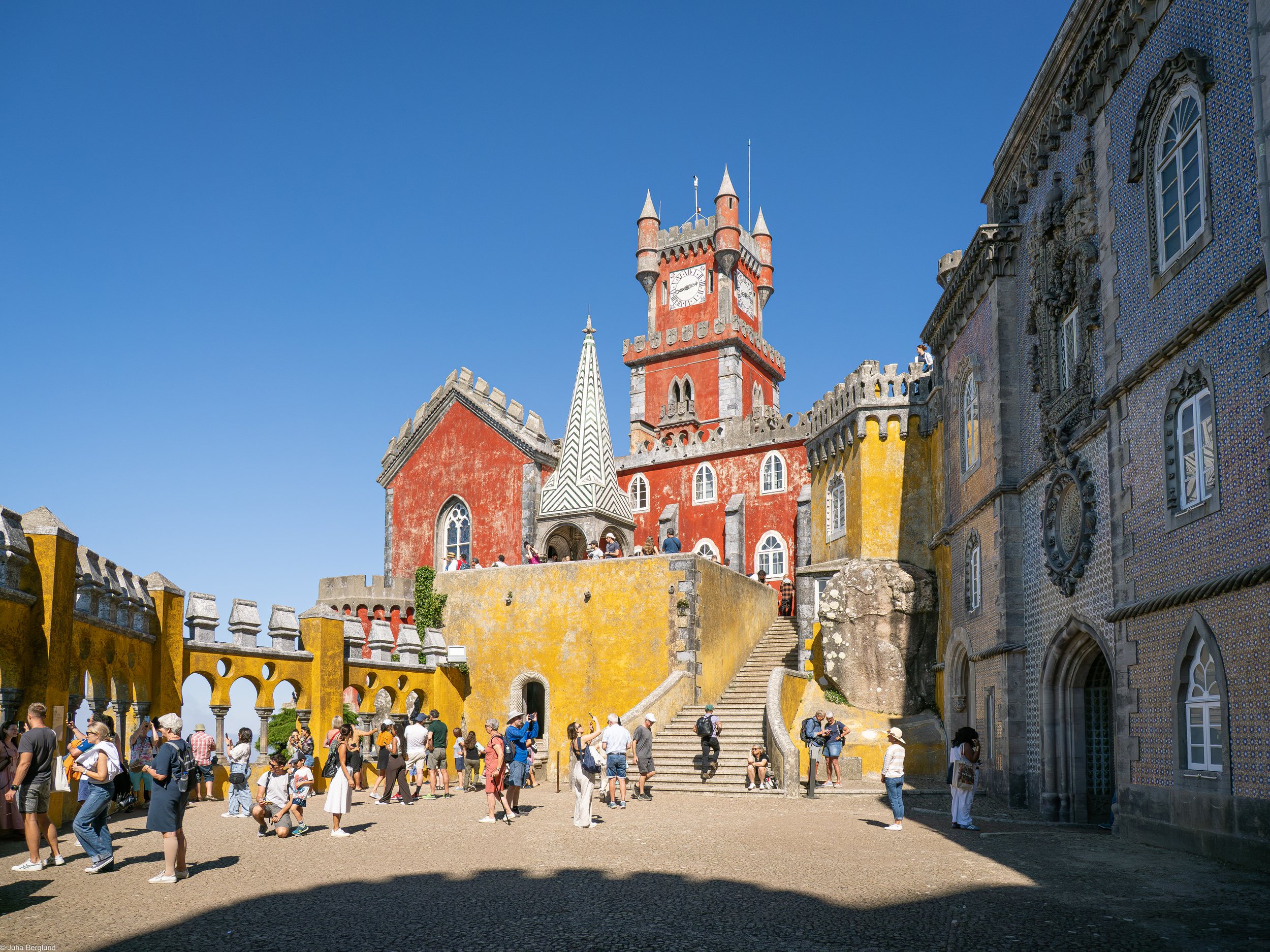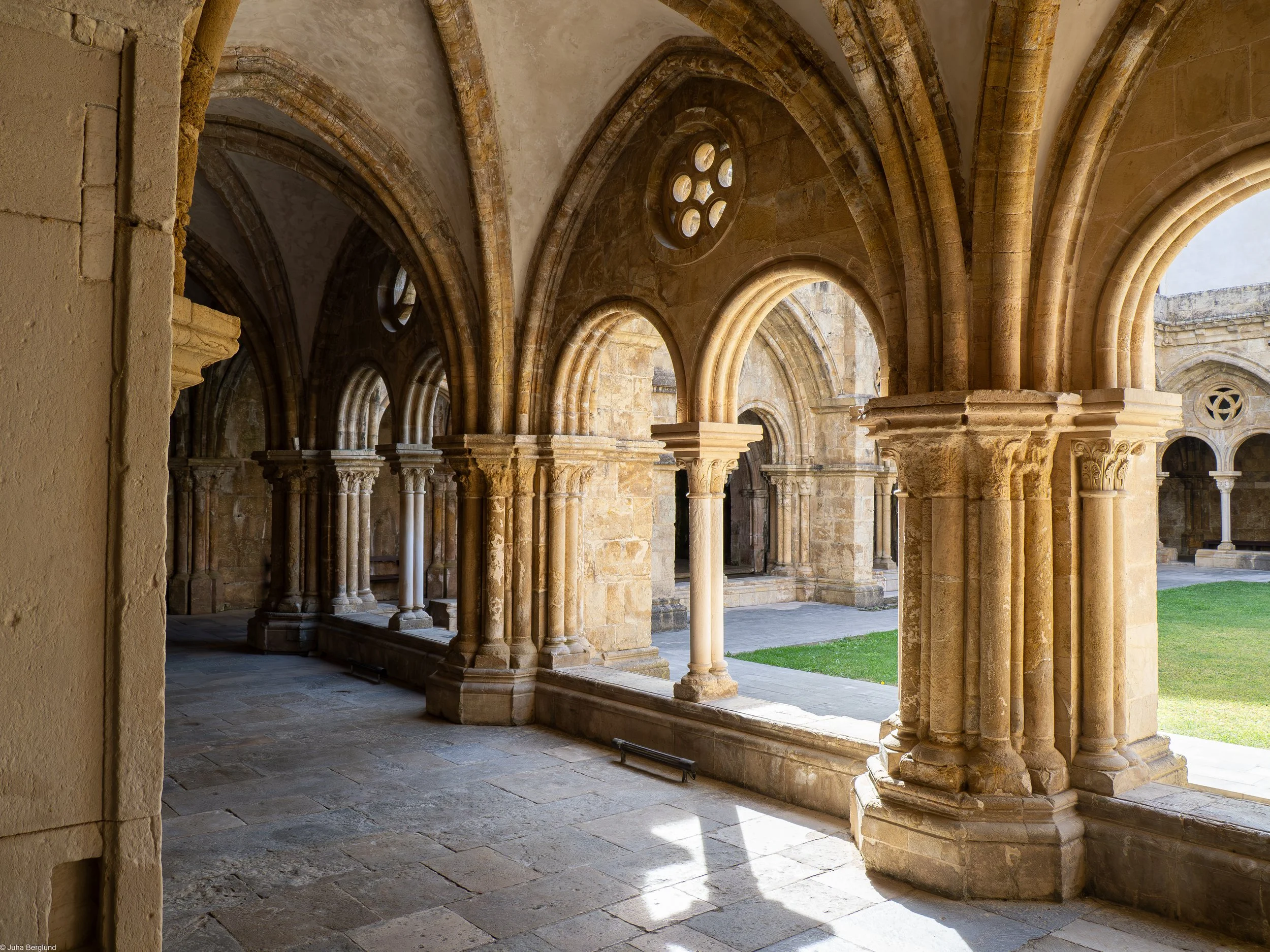Pastel de nata are Portuguese pastries. They hit me like a drug! The conservative estimate is that I consumed at least three of these every day.
My in-laws came to visit Finland – possibly, but hopefully not, for the last time. Finland in autumn isn’t exactly known for its irresistible charm; it’s dark, moist, and has the mildly sweet scent of decomposing leaves. So, hopping on a week long excursion to Portugal was an easy choice.
Portugal had been on my bucket list for a while, and October turned out to be the perfect time to go. Not too many tourists and the weather was warm enough for shorts. Like a Finnish July with better food and less sleet. Delicious food wasn’t a surprise, but the pastries… caramba! I knew they’d be good, but I wasn’t prepared for this level of sugar-driven obsession. Every breakfast was a failed attempt to even a modest level of self control. I decided to enjoy life for a week and to have a serious discussion with my pancreas later.
My partner, a master travel planner, handled the logistics as always. I mostly just followed commands, hauled the bags, and took tons of photos. We took a guided tour to picturesque Sintra, and to my surprise, the guide turned out to be a former hockey player and an NHL fan. Discussing ice hockey in Portugal is as likely as finding a sauna in the Sahara, but I’m happy to take all the chances I get.
The Portuguese are a deeply religious people. From what I saw, there are two main faiths: Catholicism and football. Both come with their own Holy Trinity: the Father, the Son and the Holy Spirit… and Benfica, Sporting, and Porto. Then there’s Cristiano Ronaldo, apparently the Holy Son (of Portugal), and conveniently a former Sporting disciple. It’s all very theological.
We had a driver to take us from Lisbon to Porto, sightseeing along the way. I quickly realized that Portuguese drivers are operating on another level of spatial awareness. A camel might not make it through the eye of a needle, but a Portuguese driver could thread a car through it! I’m genuinely glad we didn’t rent one; I would have had an anxiety attack before even leaving the garage.
Francesinha, “a heart attack on a plate”, is a Porto speciality. Tasted good, but even I couldn’t eat these every day.
The train ride back was… an experience. It was packed to the brim, sweltering at 50°C, and half an hour late. The only relief came from a vent blowing faintly lukewarm air, which I took turns using to cool my armpits, with little success.
Portugal itself, though, was fantastic. I could easily retire there. The place just oozes history: Moorish castles perched on high hills, old coastal forts that once guarded the edges of the known world, and more churches than cafés! What’s fascinating is how the same history can look so different depending on who’s telling it. Ask a Portuguese person, and it’s a tale of discovery, adventure, and glorious empire. Ask a Brazilian, and it’s... somewhat less glorious.
The service culture felt oddly familiar: half the time people were nice and friendly, and the other half was pure “I just work here.” As a Finn, that made me feel right at home. Since I don’t quite look like the rest of the family, I got singled out a few times. The most memorable moment was in a supermarket when a security guard decided I looked suspicious just because I was idling next to my in-laws as they decided souvenirs. First time for everything!
Anyway, Portugal was great. Would recommend – five stars. Especially if you like sunshine, pastries, and mild chaos.
Entry point for the trip: Lisboa.
Like Rome, Lisbon is built around seven hills (sete colinas). This is Miradouro da Senhora do Monte, arguably (i.e. according to the tuk tuk driver) the prettiest viewpoint of the city.
Same city, opposite side: Miradouro de São Pedro de Alcântara.
A funicular derailed in Lisbon a month before our visit, resulting in 16 deaths and 23 injuries. It’s one of the biggest tragedies in Portugal in recent years. Rest in peace, everyone.
Restauradores Square is in the heart of Lisbon.
We took a ride to Belém, Lisbon’s “museum district“, to enjoy the sunset.
Belém Tower was wrapped up for renovation so a picture of the monument shall do. Belém served as a point of embarkation and disembarkation for Portuguese explorers and the tower served as a ceremonial gateway to Lisbon.
Monument to the Discoveries. Portugal has a remarkable history from the Age of Discovery; they even started it.
National Pantheon in the background.
Backyard of the monastery of São Vicente de Fora.
Busy day at work.
Herding tourists seems more relaxing than protecting the parliament.
Portugal has thousands of churches, chapels, and shrines. Consequently, I have hundreds of similar looking pictures. This one is Basílica da Estrela.
Lisbon and San Fransisco have more in common than just the hilly terrain: Lisbon bridge was built by the same company as the Golden Gate. It’s even painted in the same colour.
A sardine shop. They look cute, but the same canned fish costs a fraction in a regular super market.
Praça do Comércio, allegedly (i.e. again according to our tuk tuk guy) the largest market square in Europe.
Leaving Lisbon, this is Cascais. Rich people live here. Christiano Ronaldo is building his 20+ m€ residence in the Cascais area.
Cabo da Roca is the westernmost point of continental Europe.
Sintra is a resort town in the foothills of Portugal’s Sintra Mountains and a UNESCO World Heritage Site.
Sintra was full of tourists even though it wasn’t the peak season.
Pena Palace is a castle built on a hilltop in the Sintra Mountains. It’s a mishmash of different architectural styles. I perhaps would’ve not chosen the same colours, but then again, what do I know. Perhaps the designer ran out of same colour Lego?
View from the Pena Palace. If you zoom in and squint, you can see the flag of Finland on the Moorish ramparts. Thiefs! Copycats! Apparently, it’s actually the original flag of Portugal.
Back in Lisbon. Church of Saint Dominic. Fortunately, churches don’t all look exactly like another. This one burned badly in 1959 and restoration left many signs of the fire in place.
Leaving Lisboa again, driving towards Porto. This is a panorama of Nazaré.
Nazaré is a popular surfing location because of the high waves.
The elegance of Nazaré on display in the latest beach fashion. Nazaré women are famous for wearing seven skirts.
According to Wikipedia, due to the height of the waves, numerous surfing records have been set at Nazaré.
Next stop on the journey: Fátima. It’s a popular destination for religious tourists, attracting 6-8 million pilgrims every year.
We took a bathroom break in a place that is manufacturing religious souvenirs. I was surprised to learn that there’s still manufacturing in Europe. This Virgin Mary can even move her eyes!
Moving on, yet another UNESCO World Heritage: University of Coimbra.
We had a driver named Ana who took us from Lisbon to Porto. I wish I had her kind of cool behind the wheel. She just smiled, waved at people, and kept on pushing through the traffic. She also squeezed through the gap in the picture. There were barely two centimeters on each side, and that was after folding the mirrors in! Ana is my hero and role model.
Unfortunately we didn’t get to see the famous Library of Coimbra; it was already fully booked. We stopped at Old Cathedral of Saint Mary of Coimbra instead. More churches!
Pigeons! I love photographing them. There was a hipster in Porto who arrived in a café riding a motorcycle, together with his pet pigeon.
Attention all extroverts: a motorcycle may not guarantee you the unwavering attention of strangers, but a pet pigeon most definitely does!
Finally in Porto, the “Capital of the North”.
Porto is split by the winding Douro River.
These are rabelo boats, the workhorses of the Douro river. Rabelos were used to transport Port wine barrels from the vineyards in the valley downriver to the wine cellars in Porto.
The old houses are really, really narrow, sometimes seemingly no wider than a doorway. Back in the day, the city tax was calculated according to the width of a building’s front facing the street.
Blue-eyed hunter, one heartbeat from flight. The leap is ready; the moment already gone.
I’m not much of a poet, but of all the pictures I’ve taken, this is perhaps my favourite! Obrigado, senhor siamês! 😁
Port in Porto. I didn’t really know the difference between types like tawny or ruby, so some experimental science was required.
Porto is a pretty town.
“Half Rabbit” is in Porto. Art can be more than just borrowing and reusing other people’s ideas: you can always upgrade to recycling their trash too.
Iberian Lynx in Lisbon. Both by a street artist called Bordalo II.
Bye bye Porto, back in Lisbon.
We spent the last day of the trip in Parque das Nações area, which is the most modern part of Lisbon.
The area was built for Expo ’98 World Fair.
Such a great trip! Obrigado, Portugal.









